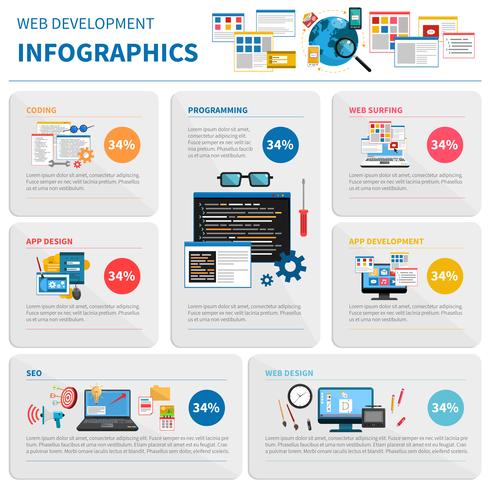Interested In Discovering Exactly How Site Design Has Altered Throughout The Years? Discover The Development From Standard, Uncomplicated Styles To User-Centered Strategies That Prioritize The Demands And Choices Of Online Visitors
Interested In Discovering Exactly How Site Design Has Altered Throughout The Years? Discover The Development From Standard, Uncomplicated Styles To User-Centered Strategies That Prioritize The Demands And Choices Of Online Visitors
Blog Article
Authored By-Asmussen Bowles
In the past, web sites were simple and focused on info. Navigation was direct, and layout was for desktops. Now, individual experience is key. Data guides styles for easy navigating. Receptive designs fit different gadgets. https://seo-services-for-small-bu51505.59bloggers.com/30289959/methods-for-successful-ppc-through-efficient-keyword-research , dark mode lowers strain, and minimalist menus enhance navigating. Interactive functions involve customers, and bold visuals stand out. AI integration improves interaction. See exactly how ada website accessibility requirements has developed to enhance your on the internet journey.
Early Days of Web Design
In the very early days of web design, simplicity reigned supreme. Websites were basic, with limited shades, typefaces, and layouts. The focus got on giving details as opposed to flashy visuals. Customers accessed the internet through sluggish dial-up links, so speed and capability were vital.
Navigating food selections were straightforward, commonly situated on top or side of the page. Sites were developed for computer, as mobile surfing had not been yet widespread. Material was king, and designers focused on simple readability over complex style aspects.
HTML was the main coding language made use of, and designers had to work within its constraints. Computer animations and interactive features were very little contrasted to today's standards. Internet sites were static, with little vibrant web content or individualized individual experiences.
Rise of User-Focused Style
With the evolution of site style, a change in the direction of user-focused style concepts has actually become progressively popular. Today, developing websites that focus on user experience is crucial for engaging site visitors and attaining company objectives. User-focused style includes recognizing the requirements, preferences, and behaviors of your target audience to tailor the website's design, material, and features accordingly.
Developers now perform thorough study, such as individual surveys and usability testing, to gather insights and responses straight from individuals. This data-driven strategy aids in producing intuitive navigating, clear calls-to-action, and aesthetically appealing user interfaces that resonate with visitors. By putting the individual at the center of the layout process, web sites can deliver a much more tailored and satisfying experience.
Responsive design has additionally become a vital element of user-focused style, making certain that websites are maximized for various gadgets and display dimensions. This flexibility enhances access and use, catering to the varied means users connect with internet sites today. Basically, the surge of user-focused layout indicates a change in the direction of producing digital experiences that focus on the needs and assumptions of the end customer.
Modern Trends in Website Design
Check out the latest trends forming web design today. One prominent trend is dark mode style, supplying a smooth and modern-day look while minimizing eye strain in low-light atmospheres. One more vital fad is minimalist navigation, streamlining menus and boosting customer experience by focusing on essential elements. Incorporating micro-interactions, such as animated buttons or scrolling impacts, can develop an extra engaging and interactive web site. Responsive layout continues to be important, guaranteeing seamless individual experiences across numerous gadgets. In addition, making use of vibrant typography and unbalanced formats can add visual interest and accentuate certain web content.
Incorporating AI modern technology, like chatbots for consumer assistance or individualized suggestions, enhances customer involvement and streamlines procedures. Access has additionally become a substantial trend, with designers focusing on inclusive style techniques to deal with varied customer needs. Accepting sustainability by maximizing web site efficiency for speed and effectiveness is one more emerging pattern in website design. Teaming up with individual comments and data analytics to repeat and improve layout continually is necessary for remaining relevant in the ever-evolving electronic landscape. By embracing these contemporary fads, you can create an aesthetically enticing, straightforward site that resonates with your target market.
https://top5seopluginsforwordpres39506.liberty-blog.com/29977952/improve-your-ppc-campaigns-by-making-use-of-reliable-keyword-research-methods-that-will-change-your-advertising-and-marketing-performance-discover-more-today
As you review the evolution of website layout from the early days to currently, you can see how user-focused layout has actually become the driving force behind modern-day fads.
Embrace the journey of modification and adjustment in website design, always maintaining the customer experience at the center.
Remain existing with the latest patterns and modern technologies, and never stop developing your approach to create visually stunning and user-friendly sites.
Progress, adjust, and produce - the future of web design remains in your hands.
